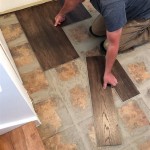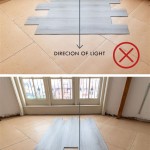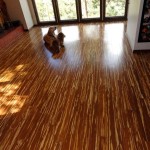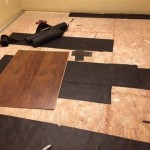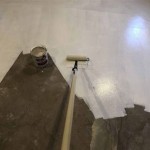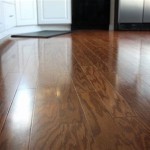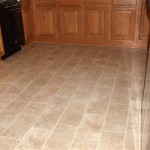What Is the Primary Difference Between Engineered and Laminate Wood Floors?
In the realm of home improvement, choosing the right flooring can significantly impact the aesthetics and functionality of your space. Among the many options available, engineered wood and laminate flooring stand out as popular choices, each possessing distinct characteristics that cater to diverse needs and preferences. While both offer the look and feel of real wood, understanding their primary differences is crucial to making an informed decision. This article aims to delve into the key distinctions between engineered and laminate wood floors, providing insights that will guide your selection process.
Construction and Composition
The most fundamental difference between engineered and laminate flooring lies in their construction and composition. Engineered wood floors are crafted from multiple layers of real wood, with a top layer of veneer providing the visible wood grain and surface. The core layers are typically made from plywood or medium-density fiberboard (MDF), offering stability and durability. In contrast, laminate flooring doesn't contain any real wood. It consists of a core layer of high-density fiberboard or particleboard, covered with a photographic image layer that mimics the appearance of various wood species. This image layer is then sealed with a clear, wear-resistant coating.
Durability and Water Resistance
Engineered wood floors generally exhibit superior durability compared to laminate floors. The real wood veneer used in engineered flooring is more resistant to scratches and dents than the photographic image layer found in laminate. Moreover, engineered wood floors can be refinished multiple times, extending their lifespan. However, both engineered and laminate flooring can be susceptible to water damage. Engineered wood floors, with their real wood layers, are more vulnerable to moisture than laminate floors. Laminate flooring, with its protective coating, offers better water resistance, making it a suitable choice for areas prone to spills or humidity.
Installation and Maintenance
Installation methods and maintenance requirements also differ significantly between engineered and laminate flooring. Engineered wood floors can be installed using a variety of methods, including glue-down, floating, and nail-down installations. Laminate flooring, on the other hand, is typically installed using a floating method, where the planks are clicked together without being attached to the subfloor. This floating installation system provides a certain level of sound insulation and simplifies the process of replacing individual panels if needed. In terms of maintenance, both engineered and laminate flooring require regular sweeping and mopping to remove dirt and debris. However, engineered wood floors may require occasional sanding and refinishing to restore their original shine, while laminate floors generally need less maintenance.
Cost Considerations
Cost is often a significant factor in flooring decisions. Typically, engineered wood floors are more expensive than laminate floors. This price difference is attributed to the use of real wood in engineered flooring. However, the cost of engineered wood flooring can vary depending on the wood species, thickness, and finish. Laminate flooring, as a more affordable option, can be a budget-friendly choice for homeowners looking for a wood-like appearance without the high price tag. However, the cost of laminate flooring has increased in recent years due to the introduction of high-quality, realistic finishes and innovative designs.
Environmental Sustainability
Environmental sustainability is increasingly becoming a priority for consumers. Engineered wood floors, crafted from real wood, can be a more sustainable choice compared to laminate flooring, which often contains manufactured materials. However, it is important to choose responsibly sourced engineered wood flooring that comes from sustainable forestry practices. Laminate flooring, while not entirely made from natural materials, can be a more sustainable option in cases where it is made from recycled materials and manufactured in a way that minimizes its environmental impact.
Aesthetic Appeal
Both engineered and laminate flooring offer a wide range of aesthetic options to suit different design styles. Engineered wood floors provide the authentic look and feel of real wood, with natural variations in grain patterns and colors. The top veneer layer can be chosen to match a variety of wood species, from classic oak and maple to exotic hardwoods like walnut and cherry. Laminate flooring also boasts a wide range of styles, textures, and colors, designed to mimic the appearance of various wood types, stone, and even tile. With advancements in printing technology, laminate flooring can now achieve remarkable realism, making it a viable alternative for homeowners seeking a specific look without the high cost of real wood.

Engineered Wood Flooring Vs Laminate Albany Woodworks

Engineered Hardwood Vs Laminate Flooring

Laminate Flooring An Excellent Diy Idea For Home Improvements

What Is Engineered Wood Flooring Made Of And Beyond Blog

Laminate Vs Engineered Wood 7 Crucial Differences To Consider Tile Merchant

Engineered Hardwood Floors Vs Laminate Find The Best One

Hardwood Vs Laminate Flooring What S The Difference

Engineered Hardwood Floors Vs Laminate Find The Best One

Engineered Hardwood Vs Laminate Flooring

Laminate Vs Lvp Choose The Ideal Floor Today Reallyfloors America S Est Hardwood Flooring
See Also

